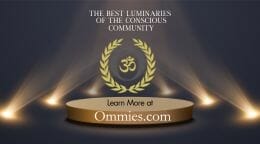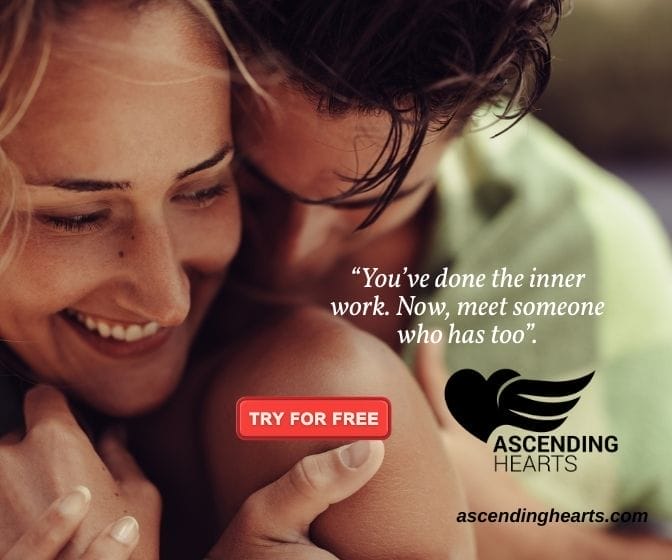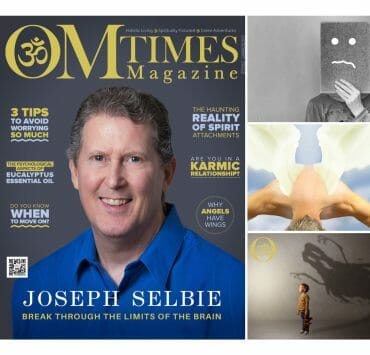Joseph Selbie: Break through the Limits of the Brain

They’re in a crystalline Lattice where everything is lined up, and those crystals take on different abilities.
They become good at conducting things. They become translucent. And what I have read is that the soul can only perceive a very small bit of itself at that point but is nonetheless powerful enough to organize the matter around it and make it form into a crystal. Then, those life forms gradually become more complicated; we become plants, we become animals, and finally, we become men or women or people as we know it, but the learning experience continues. And the main thing about the learning experience is to be more and more aware of what we truly are.
And that takes a lot of experimentation, especially when we become people, because there’s a whole range of things we can do to figure out who we are and what we can do. And there’s a whole range of mistakes we can make in figuring that out. But gradually, inevitably, we are going to learn more and more about what we truly are.
Sandie Sedgbeer: Well, if we do not break through the limits of the brain, if we do not access that larger part of ourselves, that greater reality, would you say, wow, that’s a missed opportunity?
Joseph Selby: Well, everybody gets to make that choice. I would personally think it’s a great, missed opportunity if you are interested and you see the possibility, I would really say, I would really encourage people to take it, to experiment with meditation, to experiment with directly experiencing realities that are beyond what the senses alone can tell you because it’s wonderful. It isn’t just another reality that is equal to our own. It’s another reality that is deeper. That is more joyful. That is a truer source of happiness, a truer source of feeling loved and being able to give love that the experience more than pays for the time and energy it takes to access it.
Sandie Sedgbeer: But you’ve been doing it for 50 years. Is the experience worth 50 years of work?
Joseph Selby: I didn’t have to wait 50 years to experience it if I had. I honestly now doubt if I would still be meditating. So there were instant payoffs in meditation. There were longer-term payoffs, and now, as I have done it for 50 years and have gone through the arc of a lifetime, I increasingly appreciate what it’s done for me. And the day-to-day state of mind and heart I have as a result. I would not trade it for anything, but I would’ve said that same thing 30 years ago, 40 years ago. I wouldn’t have traded. It just gets better, but it’s still highly expansive and life-changing.
Sandie Sedgbeer: I mean, meditation has gone mainstream. I think even if we don’t practice meditation, we are very aware of the science of how and what the benefits are physically in many ways, and for depression, for changing brain states, for changing all kinds of things that maybe we are not happy with. The key, I think, for many people is being able to meditate successfully. And this is something that I’ve struggled with for a long time.
Sandie Sedgbeer: Joseph, it seems that saints, sages, near-death experiences, and meditators experience this greater reality. And if we are none of those, we don’t, which, you know, is very upsetting. So what can one do if one really finds it very difficult to meditate, to experience that greater reality? I feel like sometimes I’m, sitting on the other side of a window, watching all these people who can do this wonderful thing that I just can’t do.
Joseph Selby: Well, it’s an excellent question. And one that is often asked, and I’ve often been asked, so let me start by saying it is difficult 50 years on. I can’t immediately make my mind stop thinking about things. I have learned techniques. I have learned approaches by just using my own mind to get my mind to go, to quiet down. However, it’s not as if I can immediately become perfectly still even after 50 years of meditation. And my mind becomes crystal focused. And I would go beyond the brain into this higher awareness of command if I work at it. And if I have enough time to do it, I can be much more successful by a long shot than when I first began. So I guess what I’m trying to say is it’s like many things, you know, if you play a sport, if you are a tennis player, you don’t play well.
Every time you play tennis; you certainly don’t play tennis. Well, the first time you started to play it, everything we do in life requires some degree of practice and commitment to get better. So all that said, tennis kept you going, if you were a tennis player, because there was a spark of fun in it, even though you hit it into the net the first 50 times you hit the ball. There was something that drew you and kept you going until you could become a tennis better tennis player. So for people who haven’t established strong meditation practice but who do practice, I’m just about willing to admit that there were some experiences they had that they really liked, and it kept them coming back. That there’s a feel for something there that is very real. So if you haven’t started meditating yet, I would encourage you to do so because I know if you do it for a little while, that can vary.
Some people are very lucky. They have a wonderful experience. The first time they sit down. In other people, their mind keeps galloping away, and their bodies fidget. They wonder why they’re doing this on earth, wasting these five or 10 minutes of their life. So when it never works for them, I would say, use a technique. The simple mindfulness technique can be effective, but some techniques can help you more than that simple technique. And of which is the one I teach in the book, breakthrough the limits of the brain. And it’s something I’ve taught a hundred times, at least in classes, et cetera, around the world that I’ve taught.
The essence of the hong sau technique is that it takes the predilection of the mind to want to think about something and gives it something specific to think about. And that is the breath. So the hong sau technique, in its essence, is watching the breath, but as the breath comes in, mentally saying the word hong, and when the breath goes out, mentally say the word sau. So hong sau, hong sau, hong on the inhalation, saw on the exhalation. So you have a focus. And as you do the technique, there are ways to bring your point of attention right to the point between the eyebrows, which is the seed of concentration for your subtle body. And it’s also where we tend to concentrate. So naturally, when we think about things, you see people, you know, frown, and they’re right there. They’re thinking about something that’s going on. So it’s a natural point of focus for the physical body and for the subtle body we’ve been talking about. So you combine that, try to bring your attention to this point, and then just watch the breath saying Hong and Sau.
And I think you’ll find; if you’ve had trouble getting your mind to calm down, that this will help you do that, it’ll be more effective. So techniques are good. Commitment is good. Once you’ve finished doing the Hung Sau technique, it can be five minutes; it can be 10 minutes, it can be 15 minutes, then stay relaxed. You take advantage of the calmness and the positive feelings that it gives You. Just take enough time to absorb them before you head off to the next thing in your life.
Sandie Sedgbeer: Is that enough? For me, to access that greater reality and really develop super consciousness, or is there more?
Joseph Selby: I think it’s important to understand that your regular consciousness, that is, I’ll define it this way as being your awareness focused through the senses, is a part of super consciousness. It is just a constricted part of superconsciousness. So, if you bear with me here, you’re always using your superconscious and your innate consciousness, which is infinite. Still, you’re just choosing to dial it down to conscious awareness. So, as soon as your conscious awareness becomes less of a focus, which it does when you close your eyes and still the body and focus the mind, you immediately become more superconscious. You’re immediately breaking through the limits of the brain that keep us conscious, keep us involved, and keep us delighted in the firework show of the interconnected neural circuits that you know love to stimulate each other.
We are automatically superconscious as soon as we can pull back from that a little bit.
So, it’s not like an amazing breakthrough experience that is all-encompassing. It changes by degree. We become more and more aware of our subtle selves. And everyone has had some super conscious experience, even if they’re largely wired for conscious experience. So it might have just been that moment at the seaside when you were just listening to the crash of surf, your thoughts faded away from anything pressing or emotionally disturbing. You just felt the wonder and beauty of being there. That feeling, even if the perception is still conscious, the feeling is superconscious, and everybody has intuition. Yeah. Where thought comes to you, like just seemingly out of the blue, because you hadn’t done a typical step-by-step rational process to have that thought, but it comes to you. It’s not only done. It comes as some random chance, but it fits something you were concerned about, wanted to know about, or wanted an answer to.
Personal guidance is often about following those subtle, intuitive thoughts of what we should do next or how to deal with a situation, perhaps a trying situation. So, we have, you know, perceptual intuition. If you will, we have thought intuition. We have feelings that are powerful and powerfully positive feelings that open our hearts to loving somebody else or to being helpful to somebody else at a time when they really need help. These are all part of our superconscious nature. We take them for granted because we do have this one foot in subtle reality and one foot in the physical body- reality happening. But most of what we are, if you will, exist in this greater, superconscious reality. So it’s not as if we never experience it. It’s just that meditation helps us gradually experience it more and more and more. And the deeper you go into meditation, the deeper that experience.
Sandie Sedgbeer: When you talk about having one foot in this greater reality and one foot in another, you often refer to it as heaven. Why heaven?
Joseph Selby: Well, I started by talking about the non-locality as one of those fundamental concepts in physics that connect with spiritual teachings. Especially experiential spirituality teachings. Well, one of those core teachings and experiential spirituality is that when we die, we live solely in our subtle energy body, our Astral body, and we leave the physical body behind. Near death, experiences say that the same thing is that when they die, they are fully in their Astral body. But there also in the heavens, they’re in reality bigger than their Astral body. They interact with other beings who are Astral beings. They interact with many, many realms that they can move to by just, almost by thought, that doesn’t require travel as we understand it. And these are the heavens. So the many near-death experiencers refer to them as the heavens.
And this is the way the heavens are described by the saints and sages. So they fit into this concept of non-locality. In certain theories of physics, like M theory, there is a very deep intersection between those two things. So, to say that we have an Astral body and a subtle body, a subtle Astral body, and a physical body working together means that the majority of us exist in this heavenly “other” realm all the time. That’s why when near-death experiencers flatline or whatever it is that is the death experience are measuring the death experience, they’re instantly there. There’s no travel time as one, near-death experience or put it. It’s just like you changing frequencies on a dial, and the dial is flipped. And there you are in this higher frequency, but you simply mean that you are now fully aware of it. You are always there.
Anyway, because of this, our two-sided nature of us. So that’s why our one foot is in heaven because that’s what the heavens are. They are the subtle reality or part of the subtle reality that we can tune into and will go to at death.
Sandie Sedgbeer: The book offers a lot of proven practices and techniques. And we talked about the concentration one, the meditation technique. One of the things that interested me is it also talks about introspection affirmations and energization exercises. The affirmations got my attention. There has been so much about affirmations in the past 30 and 40 years. And many people have lost faith in them because they’ve been hijacked to a degree, and they’ve become a little bit trite. We heard what you were saying about affirmations. So I decided to buy the book, um, Yogananda’s on affirmations, which was quite different. Do you think we have to do affirmations in a specific way and just follow the way they are laid out because they’re very hard to memorize some of them? If you’re reading them, you’re really not giving them a hundred percent of your attention. Are you? So what’s your thought there?
Joseph Selby: Well, let me take one step back and then come back to what specific affirmations you might want to use. I think the reason why affirmations have, in fact, sort of fallen into disrepute or people that, as you say, have lost faith in them is that an expectation has been created that all you need to do is a handful of affirmations and whatever it is, you’re affirming will become a reality in your life. And most people discover that it doesn’t become a reality. And so they say, well, affirmations don’t work.
Well, there is a method to doing them that most people don’t follow. Whatever system of affirmations you are drawn to, or wherever you have run into affirmations that you like, you’ll probably find, if you go deeply enough into those systems, that they need to be repeated until you believe them at deep levels. So you really need to get your heart and mind together and believe whatever you say.
Continue to Page 3 of the Interview with Joseph Selbie
Click HERE to Connect with your Daily Horoscope on OMTimes!
Visit Our Astrology Store for Personalized Reports
OMTimes is the premier Spiritually Conscious Magazine. Follow Us On Facebook, Twitter, Instagram, Linkedin, Pinterest, and Youtube
A veteran broadcaster, author, and media consultant, Sandie Sedgbeer brings her incisive interviewing style to a brand new series of radio programs, What Is Going OM on OMTimes Radio, showcasing the world’s leading thinkers, scientists, authors, educators and parenting experts whose ideas are at the cutting edge. A professional journalist who cut her teeth in the ultra-competitive world of British newspapers and magazines, Sandie has interviewed a wide range of personalities from authors, scientists, celebrities, spiritual teachers, and politicians.







